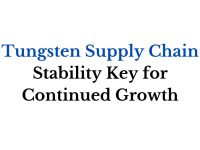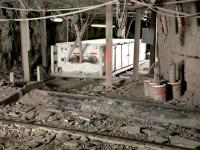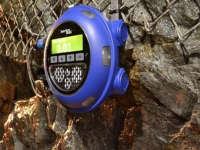In the complex landscape of global metal manufacturing, the critical nature of tungsten supply chains and access to this critical mineral is expanding beyond traditional powerhouses such as Russia and China. Tungsten, a vital component of high-performance alloys used in the aerospace, defence, and energy sectors, is entering a new phase in which diversity is essential to secure stable supply.
Navigating geopolitical challenges
The ongoing Ukrainian conflict, as well as rising tensions between the United States and China, dominate the contemporary global political landscape. In this environment, diversifying sources of tungsten mining and manufacturing becomes a strategic measure to protect the supply chain from potential disruptions that could resonate across different industries.
Noted for its exceptional strength, wear resistance, and heat resilience, tungsten is used in the aerospace, defence, tool manufacturing, consumer goods, energy industries and a variety of other purposes critical to modern life. Tungsten is used in a variety of applications, including aerospace turbine blades and fuel nozzles, defence armor-piercing bullets, and high-temperature energy components such as reactor housing.
China and Russia’s Dominance
China presently controls roughly 80% of worldwide tungsten supply and production, with Russia accounting for approximately 15%. This concentration exposes the supply chain to geopolitical swings, raising concerns about stability in the face of continued global uncertainty.
Diversification Initiatives
The urge for diversification is heard clearly in the corridors of Western nations and industries. Countries like Vietnam and Bolivia, which have significant tungsten reserves but little tungsten production capacity, are emerging as potential competitors. Enter the scene: Tungsten Metals Group, an Australian company with a fully operational ferro-tungsten production facility in Vietnam. TMG, which has the greatest production capacities outside of the leading competitors, intends to boost confidence in alternate sources of this critical mineral and de-risk tungsten supply chains as we continue forward into an increasingly uncertain future.
Embracing New Frontiers: Technology, Extraction
Diversifying production sources is only part of the solution. Investing in cutting-edge technologies for extraction and processing is equally important for strengthening tungsten supply chains. Environmentally friendly processes, such as hydrometallurgy, are gaining traction for their potential to extract tungsten from low-grade ores with minimal environmental impact, ensuring sustainability alongside stability.
The Importance of Stable Supply Chains
A reliable supply chain for tungsten is more than just an industry requirement; it is the foundation for sustained growth and development across industries that rely on high-performance alloys. Disruptions can cause production delays, increased costs, and decreased competitiveness, with far-reaching consequences for the economy and national security.
Furthermore, for sectors driving the transition to renewable energy, the reliability of tungsten supply is critical. Wind turbines and solar panels, which rely on high-performance alloys including ferro-tungsten, may encounter delays due to geopolitical upheavals, hindering attempts to further reduce greenhouse gas emissions.
The manufacturing of tungsten is changing, moving away from China and Russia’s hegemony. Innovation in technology, supply chain diversification, and the rise of major players such as Tungsten Metals Group signal a paradigm shift in supply chain stability. Supply chains for tungsten must remain stable and resilient if high-performance alloy-dependent businesses are to continue growing and meet the demands of energy security and environmental sustainability.



















